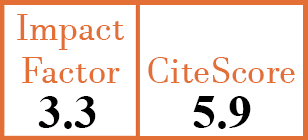Full Papers
IL-10 and TNF-α promoter polymorphisms in susceptibility to systemic lupus erythematosus in Taiwan
Y.-J. Lin, L. Wan, C.-M. Huang, J.-C. Sheu, S.-Y. Chen, T.-H. Lin, D.-Y. Chen, K.-C. Hsueh, C.-C. Lai, F.-J. Tsai
CER548
2010 Vol.28, N°3
PI 0318, PF 0324
Full Papers
Free to view
(click on article PDF icon to read the article)
PMID: 20576226 [PubMed]
Received: 03/08/2009
Accepted : 04/12/2009
In Press: 23/06/2010
Published: 23/06/2010
Abstract
OBJECTIVES:
The genetic control of Interleukin-10 (IL-10) and Tumour necrosis factor-α (TNF-α) production and the possible interaction between the two cytokines in influencing SLE susceptibility as well as clinical features has not been completely evaluated in the Taiwanese population.
METHODS:
We investigated the association of IL-10 and TNF-α promoter polymorphisms (-1082, -819 and -592 for IL-10 gene; -308 for TNF-α gene) with SLE in a total of 172 Taiwanese patients and 215 controls.
RESULTS:
Our results indicate that IL-10 A/T/A-A/T/A genotype was associated with Taiwanese SLE, whereas no significance was observed between TNF-αgenotype and SLE. Furthermore, the TNF-α G allele frequency of the polymorphism at -308 was significantly decreased in patients with oral ulcers. The combined frequencies of IL-10 A/T/A haplotype and TNF-α G-G genotype were significantly increased in SLE patients. In addition, the combined frequencies of IL-10 A/T/A haplotype and TNF-α G-G genotype were significantly decreased in patients with oral ulcers.
CONCLUSIONS:
These results suggest a significant correlation of the combined IL-10 and TNF-α genetic polymorphisms contribute to SLE susceptibility and clinical features in the Taiwanese population.


